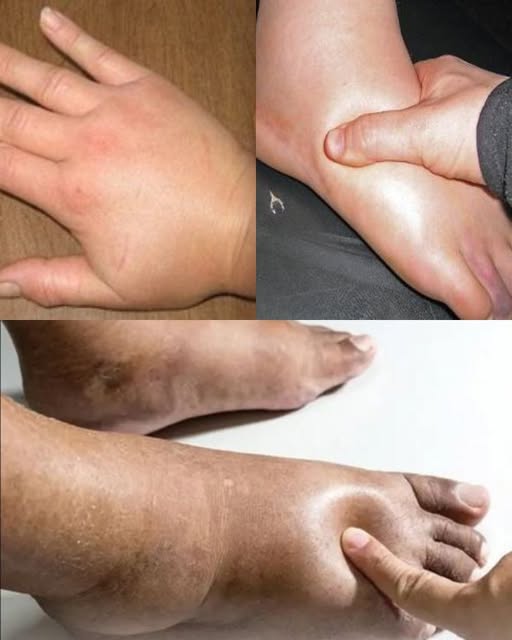Shocking simulation shows exactly what happens to your body if you stop eating sugar for 2 weeks
A simulation has revealed that the human body has a mega transformational change when you stop eating sugar for two weeks.
Sugar is considered a main perpetrator behind the obesity crisis in the US, and you don’t need me to tell you that excess consumption of the sweet stuff isn’t good for your teeth, either.
Doctors have long warned that the American diet, characterised by sugar-sweetened beverages and similarly sugar-laden snacks, can lead to type two diabetes as well as a myriad of other chronic diseases.
It’s clearly in our best interests to reduce our intake if we’re to live a long, healthy life, though that’s easier said than done when it comes to cleansing our diet of it completely.
This is because, much like addictive drugs, sugar tickles the reward (pleasure) part of our brains, releasing the hormone dopamine, which makes us feel happy and, in turn, keeps us craving it more and more.

Sugar tastes nice and gives us a dopamine hit too (Getty Images)
Complicating matters, not all sugars are ‘bad.’
Health explains natural sugar in dairy, fruit, and vegetables is different from the added, artificial sugars piled into processed foods – and only the former ticks all the boxes when it comes to fibre, vitamins and minerals that we need to support our overall health.
Still, while sugar is a pretty tough habit to kick to the curb, it’s not out of the realm of possibility as one viral simulation by @GrowfitHealth shows.
Examining the effects under a microscope, the simulation reveals that the body does eventually learn to cope without its dopamine crutch by the end of two weeks, but grapples with some major transformative changes from one day to the next.
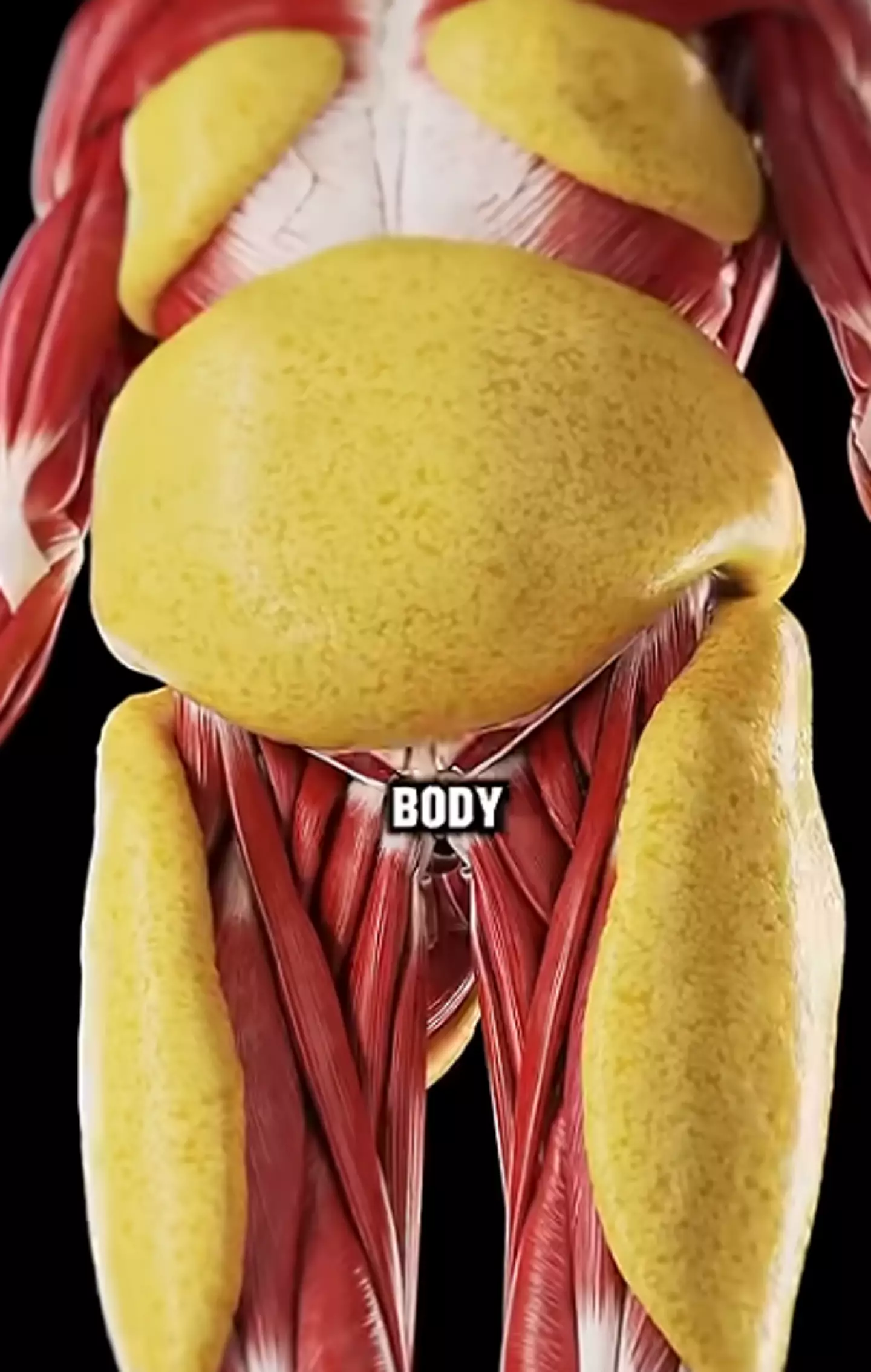
The simulation shows the body has some major changes almost immediately after quitting sugar (@GrowfitHealth/YouTube)
What happens to your body after quitting sugar?
The first two days of no sugar
The video shows that in just 48 hours of quitting sugar, the body’s blood sugar is already starting to stabilise and you’ll see ‘lesser energy crashes or sudden spikes.’
You might even see the number on the scale go down as studies reveal the body releases stored water when the sugar train is cut short.
The simulation adds that within two days, ‘your body starts tapping into stored fat for energy’.
Day three to six of no sugar
Although you might feel a slight buzz in the beginning, especially if you feel like you’re losing weight and you’re not feeling that post-lunch slump, withdrawal symptoms will soon turn to bite you somewhere between days three to six.
“You may experience headaches, mood swings and fatigue,” the video reveals before you even make it to the week mark. “This is because your body is detoxifying and adjusting.”
However, it comfortingly adds: “These symptoms will pass.”
This is backed up by the experts at Addiction Help, who write: “Common symptoms in the early stages of sugar withdrawal include physical symptoms like headaches, fatigue, and nausea. Mental symptoms include irritability, anxiety, mood swings, and generally worsened mental health.”

Mood swings can kick in when your brain feels deprived of sugar (Getty Images)
A week no sugar
Between days seven to nine, studies show that foggy feeling will begin to wind down and you’ll be rewarded with a new lease of life as whole foods all of a sudden taste better.
As per the simulation: “Your palate becomes sensitive to subtle flavors and you’ll find fruits tasting extra sweet.”
Two weeks no sugar
Finally, on the home stretch between 10 days up to the two-week mark, there’s a high chance you’re feeling energetic, banking a good night’s sleep and reaping the rewards of weight loss.
The simulation states energy ‘shoots up and you’ll notice no more sugar crashes,’ instead ‘just steady, clean fuel as your body becomes more efficient at burning fats for your fuel.’
What are the benefits of quitting sugar?
As well as weight loss, EatingWell finds other benefits to eating less added sugar can reduce the chances of developing depression, anxiety or other mental health illnesses.
Other studies have also suggested that a sugary diet is closely linked to cardiovascular diseases due to its propensity to raise blood pressure and increase inflammation.
To break free from so-called sugar addiction, the Cleveland Clinic advises never to skip a meal, drink lots of water, get plenty of sleep and to eat at least five servings of fruits and vegetables a day.
Making time for exercise to combat those stress hormones that trigger mood swings is also a good idea.
Featured Image Credit: @growfithealth/YouTube
Topics: Health, Mental Health, Fitness, World News, Food and Drink
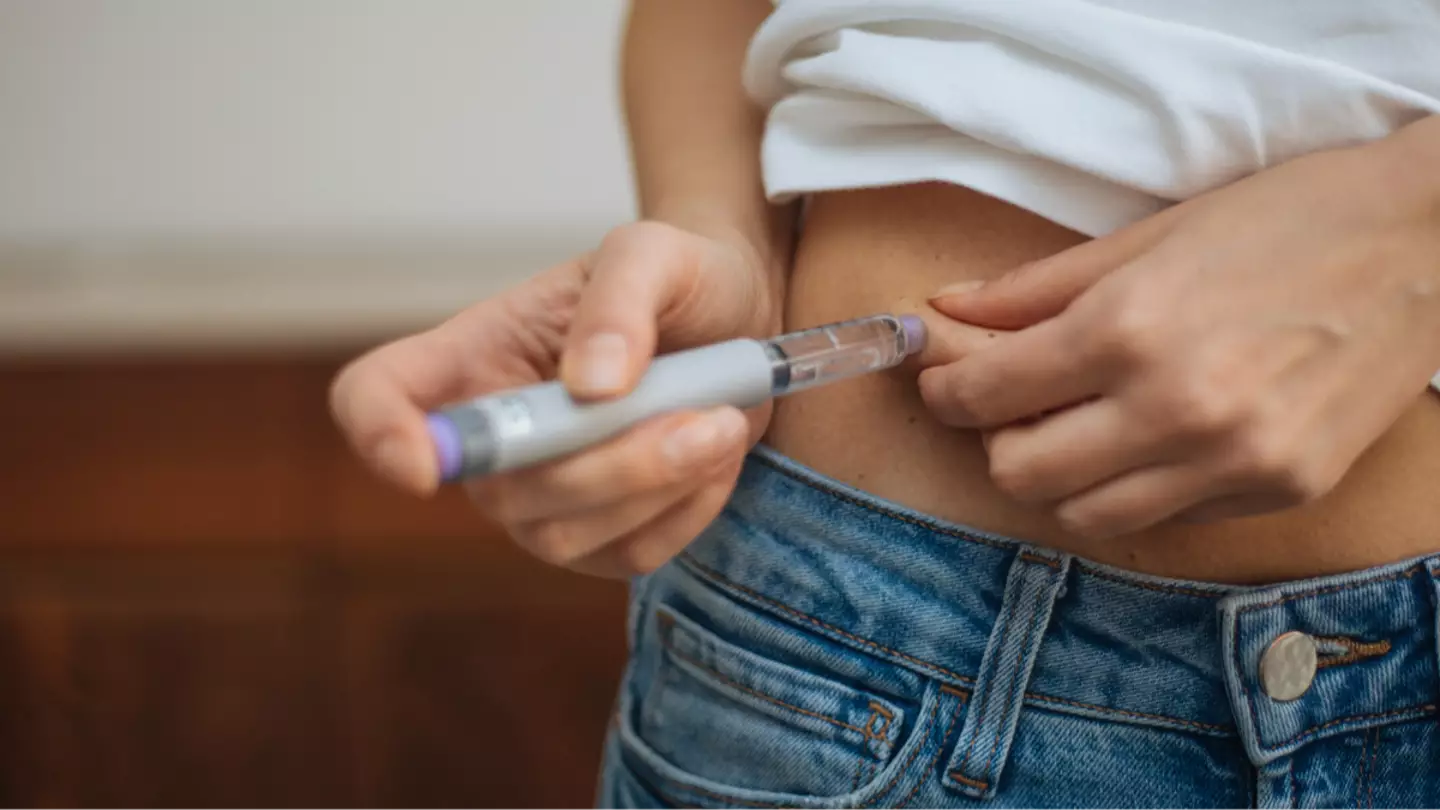
A medical professional has lifted the lid on exactly what happens to the human body within a matter of weeks of taking weight-loss jabs.
Millions of people worldwide, including dozens of Hollywood’s rich and famous, have turned to GLP-1 medications to help them lose weight and keep obesity at bay.
In the US, a staggering one in eight adults, approximately 12 per cent of the population, have turned to drugs like Wegovy and Mounjaro, which shed the pounds by suppressing appetite and regulating blood sugar levels.
While the verdict in the battle of the best is yet to be determined, a doctor has revealed what a patient might expect in a typical four-week period while on the medication.
Week one – Mounjaro vs Wegovy
In the first week on Mounjaro, patients usually take the lowest dose (2.5mg) which Doctor Crystal Wyllie at ZAVA says is for good reason, serving as an ‘adjustment period’ for the body to acclimatise to it.
In this time, patients might face some common side effects, like nausea, diarrhoea or constipation.
.jpg)
Side effects are common in the first week (Getty)
Meanwhile, those starting out on Wegovy receive an initial dose of 0.25mg, which the doc says might cause you to notice a slight change in appetite, such as feeling fuller for longer, and advises reducing food intake.
Week 2 – slight changes on the scale
In the second week, Dr Wyllie says there are ‘more obvious appetite changes’ on Mounjaro.
“You may find yourself eating less and staying fuller for longer. It is important during this stage to stick to your diet and exercise plan,” she added.
As for those on Wegovy, the expert noted the increase in dosage should make you feel your appetite go down even further and you may even experience some ‘small changes’ on the scale.
Week 3 – side effects kick in
In the case of both medications, the expert says week three can be particularly tough for those pesky reported side effects and advises sticking to small, plain meals and increasing water intake if the nausea is strong.
“Be sure to see a doctor for any vomiting and severe abdominal pain to rule out serious causes,” she added.
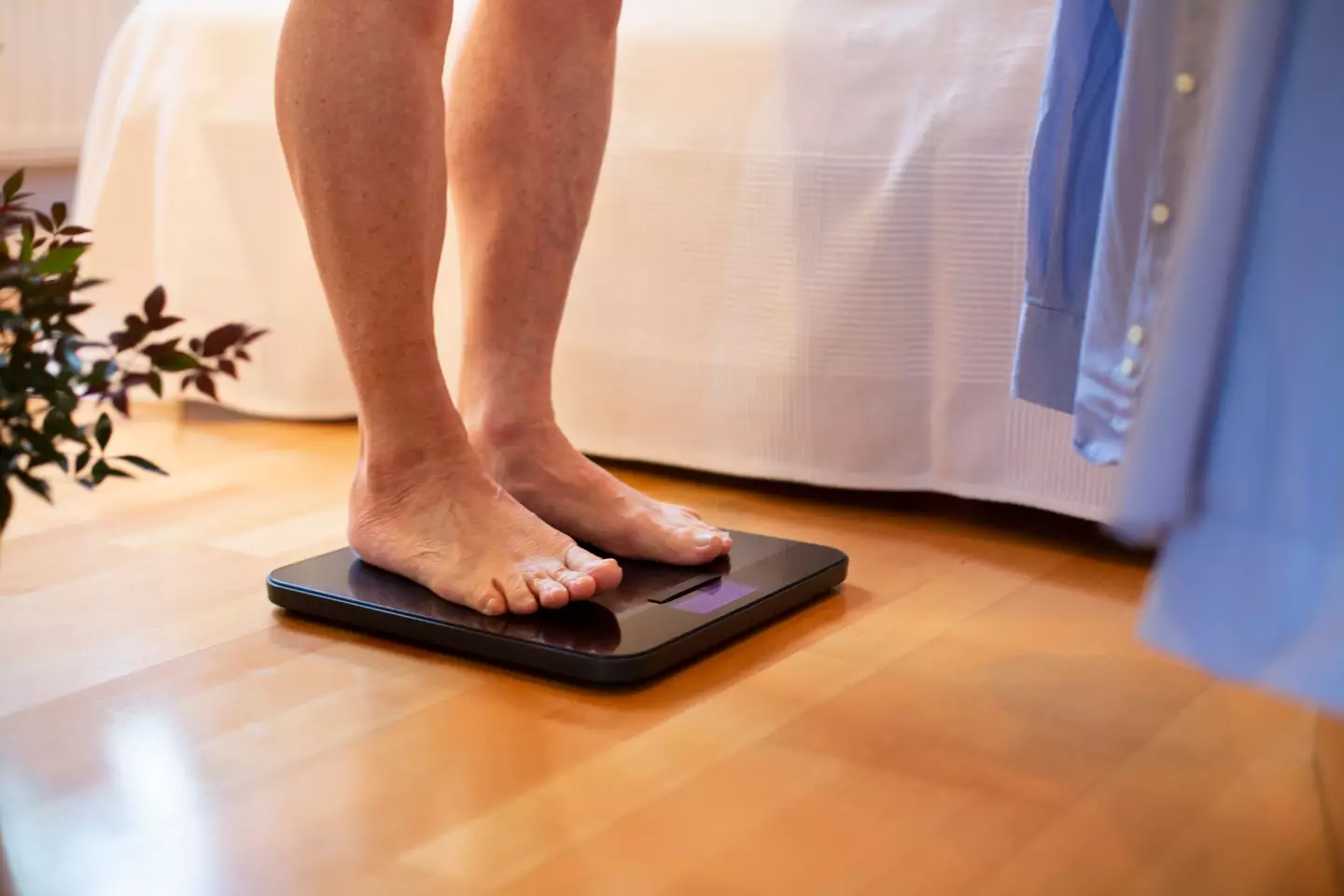
Finally, you’re likely to see some noticeable changes in your physique by week four (Getty)
Week 4 – body weight loss
Finally, the good news we’ve all been waiting for: Dr Wyllie said it’s likely you’ll experience a change in your physique or at least the number on the scale by week four.
According to a study by ZAVA, patients lose on average four per cent of their starting body weight on Mounjaro in the first month, or around two per cent on Wegovy.
However, as the dosages increase and over a longer period of time, the expert points out that Mounjaro helped patients lose an average of 22.5 per cent of their starting weight over the course of 72 weeks, while Wegovy typically sees patients lose around 17 per cent.
How to get the best results on Mounjaro and Wegovy
According to the medic, several factors can affect how much weight a patient can lose on the drugs, including age – bringing about a slower metabolism and changes to hormones, as well as diet and exercise.
Both drugs work best when supported with a healthy diet and an active lifestyle, she stressed, and these changes have to be sustainable to support and maintain your new size when you come off the medication.
She also advised sticking to the dosage schedule, which includes taking the injections at the same time every day.
“Losing weight with weight loss injections is not an overnight process, and it can take time to see results,” she concluded. “While some see significant weight loss changes within their first month, for some, the desired result takes longer. It is crucial to make healthy lifestyle changes to support your weight loss process.”
A spokesperson for Eli Lilly told UNILAD: “Mounjaro (tirzepatide) should only be used when prescribed by a licensed healthcare professional, and prescriptions should be fulfilled and supplied by registered pharmacies or providers. We encourage patients to consult their doctor or other healthcare professional to discuss any possible side effects they may be experiencing and to ensure that they are getting genuine Lilly medicine.”
A spokesperson for Novo Nordisk told UNILAD, in part: “In the UK, Wegovy is indicated as an adjunct to a reduced-calorie diet and increased physical activity for weight management and cardiovascular risk reduction. In adults, the maintenance dose of Wegovy is 2.4 mg once weekly. Ozempic (semaglutide injection) is licensed for the treatment of type 2 diabetes – it is not licensed for weight management.
“We recommend patients take these medications for their approved indications and under the supervision of a healthcare professional. Treatment decisions should be made together with a healthcare provider who can evaluate the appropriateness of using the medicines based on assessment of a patient’s individual medical profile.
“Patient safety is of the utmost importance to Novo Nordisk. We continuously collect safety data on our marketed GLP-1 RA medicines and work closely with the authorities to ensure patient safety. As part of this work we continue to monitor reports of adverse drug reactions through routine pharmacovigilance.”
Featured Image Credit: Getty Images/agrobacter
Topics: Mounjaro, Health, World News, Fitness, Food and Drink

A shocking simulation might be the push you need to have a break from sugar.
Sugar should only make up around 10 percent of your daily calorie intake, but I think we can all admit that we don’t always follow this rule.
Sugar is in more foods than you’d think, some of which have distressing amounts in. From BBQ sauce and fruit juice, to granola and flavored coffees, sugar is everywhere.
With this in mind, some people decide to cut the sweet stuff from their diets and in as little as 15 days, you can start to reap the rewards of doing so.
To show exactly what it does to your body over the course of those 15 days, Wellness Wise has created an simulation posted to YouTube.
In the first few days, you may feel irritable, fatigues and experience headaches because of your sudden sugar cut-off, but by the end of the first week you energy levels should begin to stabilize. As well as this, your might notice your skin improves and you generally feel more alert.

Removing sugary items from our diets has many benefits (Getty Stock Image)
READ MORE:
SIMULATION SHOWS WHAT HAPPENS IF YOU FAST FOR 36 HOURS
HORRIFYING SIMULATION DEMONSTRATES IMPACT VAPING HAS ON BODY
In week two is ‘when the magic happens’, per the simulation. “Your tastebuds reset and natural foods taste sweeter,” it says. It’s then that your constant craving for sugar will start to go as well.
An added bonus is that you may lose weight because your body will start to use fat stores for energy instead of sugar.
“Less bloating and learner skin are common too,” the simulation adds. “You’ll also have improved physical performance and endurance.”
There are also lots of other benefits to ditching a sugary diet, says EatingWell.
Lower risk of mental illness
According to the website, eating less added sugars (not natural sugar or total carbohydrates) can lower your chances of developing depression, anxiety, and other mental illnesses.
Researchers believe this is linked to brain inflammation which is triggered by sugar’s higher glycemic index.
Healthier heart
Some studies have suggested that those who eat more sugar have an increases risk of getting cardiovascular diseases, meaning the less sugar you digest, the lower your changes are of your heart becoming unhealthy.
This comes down to the fact that a high-sugar diet can cause raised blood pressure, increase inflammation and cause the liver to pump harmful fats into the bloodstream, EatingWell explains.
Featured Image Credit: YouTube/wellneswise4
Topics: Health, Food and Drink, YouTube, News

A simulation has shown how your body gets to work when you go 36 hours without eating, and the results are surprising.
When it comes to eating healthy and having a balanced lifestyle, people have a whole lot of opinions. And one of those common opinions is of the benefits of intermittent fasting, which is an eating plan that switches between fasting and eating on a regular schedule, per Johns Hopkins Medicine.
But what actually happens to your body during that period?
Well, a YouTube video has shown how the body tends to respond to no longer getting any sustenance.
The 55 second video, posted on the platform by the Wellness Wise channel on May 6, has many users praising the effectiveness of fasting and the benefits they have seen from doing it.

Fasting can have a surprising impact on your body in just a few hours (Getty Stock Image)
According to the video, after four hours your body stops digesting food, insulin drops and it starts burning stored sugar for energy.
After eight hours a person’s blood sugar levels begin to drop and the body begins using stored glycogen for energy.
It is at about 12 hours that fat burning begins to take place and the body starts to shift into ketosis. This pretty much just means the body is burning fat for energy instead of glucose.
This can result in weight loss, so now you understand the basic appeal of the method for losing weight.
At around 16 hours the body starts breaking down damaged cells and toxins for recycling, this phase is known as autophagy.
At 24 hours the body is fully in ‘fat burning mode’, according to the video and at this point the body can reduce inflamation and increase insulin sensitivity.
At 30 hours growth hormones inside the body begin to spike and this is believed to help preserve muscle and promote fat loss.
And finally at 36 hours the body is at maximum autophagy where your body regenerates tissues and boosts your metabolism.
Amazingly, this ‘body reset’ can be extended to 72 hours, however it will prove more difficult.
Johns Hopkins medicine has outlined some of the benefits of intermittent fasting while there remains some debate as to whether fasting is good for the body.
They noted that some of the benefits research has concluded can be gained included:
- Improved thinking and memory
- improved heart health,
- improved physical performance,
- helped prevent obesity
- improved tissue health

There remains a debate between scientists on the benefits of intermittent fasting (Getty Stock Image)
Despite these potential benefits, there are also common negative side effects that can occur when it comes to fasting.
While severity may vary, the side effects can include:
- Excessive hunger pangs
- Fatigue and low energy
- Headaches (ranging from mild to severe)
- Dizziness
- Digestive issues (e.g., constipation and bloating)
- Irritability and other mood changes
- Bad breath
- Sleep disturbances
- Dehydration
- Polyuria (excessive urination)
- Potential impacts on reproductive health
- Nutrient deficiencies and malnutrition
So before you give long intermittent fasting a go, probably best to speak to your healthcare professional for advice.
Featured Image Credit: YouTube/Wellness Wise
Topics: Health, News, Food and Drink
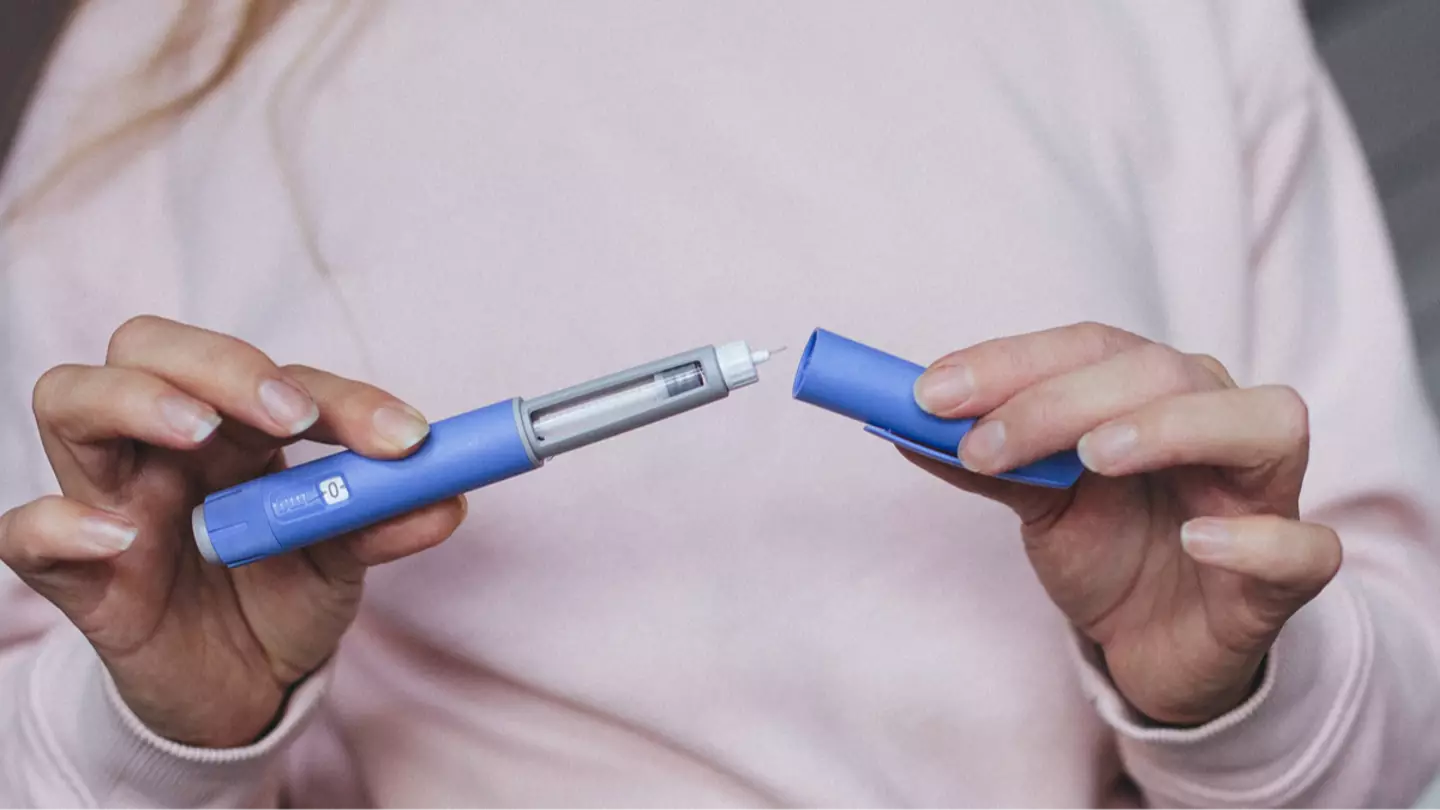
People have started trying to fix their ‘Ozempic face’ after taking the medication to aid with weight loss.
ICYMI, Ozempic is a drug that’s primary used for those with Type 2 diabetes, however, it has become increasingly popular as a weight loss medication, with many people – including celebrities – using it to drop the pounds.
It contains the active ingredient semaglutide, which is also found in other weight loss treatments.
Over recent years, many people have spoken out about some of the drastic side effects they’ve experienced while taking Ozempic, and one that’s spoken about a *lot* is something called ‘Ozempic face’.
Essentially, this refers to how the drug can impact a person’s skin.
Health.com explains: “Some people have reported ‘Ozempic face’ and ‘Ozempic butt’ or loose, sagging, or aging skin on the faces and buttocks from rapid weight loss.
“The skin has less tissue to cover in either case, which can make it sag or seem less plump.”
According to the New York Post, there’s been a surge in people looking to correct the effects of Ozempic, by seeking out cosmetic treatments.
Dr. Patrick Byrne, president of the American Academy of Facial Plastic and Reconstructive Surgery explained that he often sees patients who say they look ‘hollowed’ out with sunken cheeks and gaunt appearances.
“It’s far more dramatic and rapid weight loss than one typically sees,” Byrne said. “Changes in the face seem to be more enhanced because of it.”
As a result, people are opting for treatments including filler, particularly hyaluronic acid.
Meanwhile, the doctor explained that laser can also be an effective tool, adding: “We can stimulate collagen production, tighten the skin and address concerns like wrinkles.”
.jpg)
Ozempic is a drug that’s primary used for those with Type 2 diabetes (Getty Stock Photo)
If patients don’t fancy fillers or laser, microfocused ultrasound devices that send ultrasound waves deep into the skin can also be used to tighten up any sagging.
Patient Lindsey Sikora described her results as ‘dramatic’ explaining: “It started to tuck everything back into place and lift it where it was supposed to be.
“The results are dramatic.”
Of course, surgical options – including face, neck and brow lifts – are also effective, with Dr. Byrne explaining: “With a lot of volume loss, especially when the skin elasticity has declined, surgical options tend to be most effective.”
While we’ve all seen the results about how the drug works, but many still don’t know how it actually helps people to lose weight.
Thankfully, a YouTuber by the handle @ZackDFilms has come to the rescue and revealed the grim realities of what Ozempic does once it hits your system.
In the clip, you can see everything that happens, from how it changes your brain, to the inner workings of your organs.
Plus, it also shows some pesky side effects which might make you feel a little icky afterwards.
He states: “Once Ozempic is in your bloodstream, it activates the part of the brain that make you feel full, reducing your appetite.”






